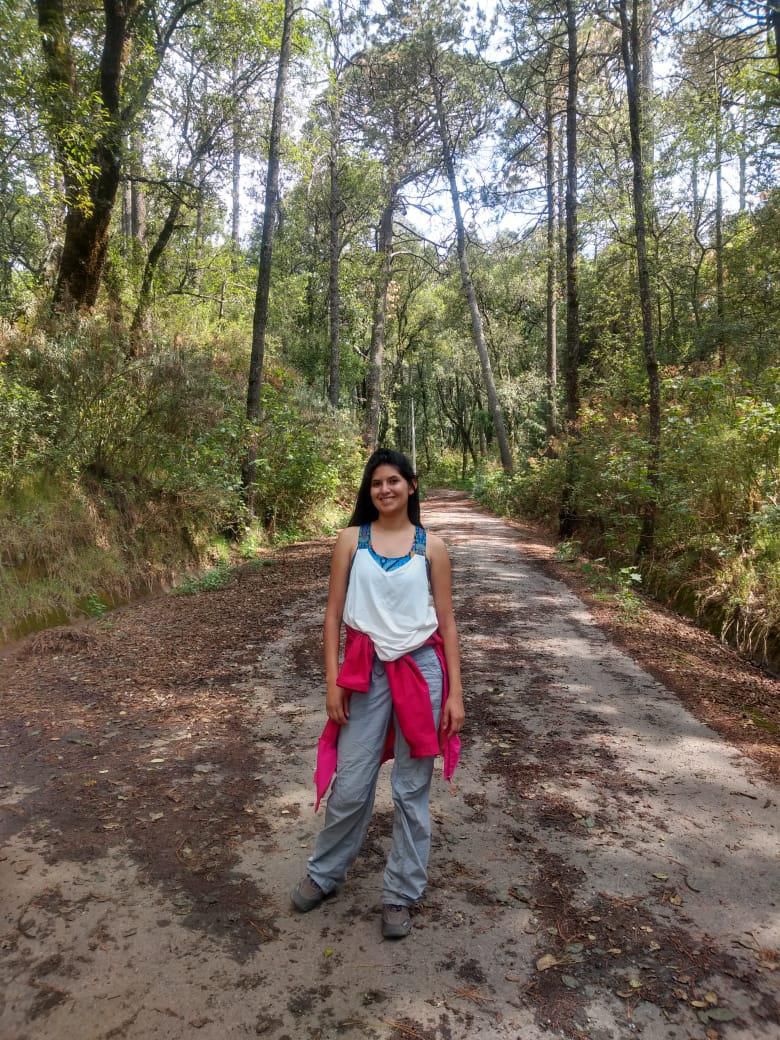
Mexican conservationist Ximena Neri Barrios
Ximena Neri Barrios
Not only is conservation biologist Ximena Neri Barrios helping to ensure the revival of Mexico’s wolf population, once extinct in the wild, she’s helping to lower the barriers of entry for young people, particularly women looking to enter into field biology and conservation.
Barrios, who is currently a conservation projects developer for Itzeni Environmental Solutions in Mexico, says trapping and hunting of the Mexican gray wolf (Canis lupus baileyi) had nearly wiped them out in the wild around 50 years ago.
In the late 1970s, four male wolves and one fertile female were captured in Mexico and it is now estimated there’s over 180 wolves in the wild across Mexico and the southern US.
“Back when wolves were wild in Mexico, there was no study of them, just efforts to eradicate them,” she says, adding that conflicts with ranchers has brought about the decline of not just the wolves but several large predator species like bears, jaguars and other big cats.
Now, Barrios works with ranching communities to understand ways to preserve the wolves. Even though wolves can attack cattle, they also have a long-term ecological role that’s important to the local environment.
“Its not just to preserve enough individuals, you have to understand the people who live in the zone… we can’t just say that all the ranchers are bad,” she says.
Barrios says that there are non-invasive ways to reduce human-wolf conflicts, for example, strobe lights with solar batteries can put out different flashes of light at night, which predators already associate with human activity, so they don’t enter certain parts of the ranchlands.
Another tactic being explored to reduce conflict is to provide incentives.
“At the moment, there’s no financial incentive in Mexico for the ranchers to preserve the wolves,” Barrios says, “but in other countries, some meat is sold at the supermarket with a special sticker that supports the conservation of big predators.”
Barrios said she hoped that a combination of increasing knowledge about the wolves and stronger ties with the ranchers would result in better outcomes.

A male Grey Mexican Wolf.
AFP via Getty Images
Lowering Barriers to entry
One of the other missions that Barrios is taking on is to help find a new generation of talent to help conserve Mexico’s wildlife.
Barrios says that for many NGOs, they can’t work with government funding alone, so they seek out international funding. However, to get these funds, often applicants need to speak English well and have at least a master degree.
“Something interesting about Mexico is that we have so much public good-will to want to conserve our natural heritage,” Barrios says,” This we have, but we also need support from the government to open up opportunities for young conservationists.”
She says while Mexico already a good level of science, it is key that the next generation is equipped not just with conservation biology knowledge, but also know how to get funds and the expertise to manage a project.
“We want to get to the technicians and undergrad students who are interested in this career path and help them get there,” she says, “You don’t just have to support the already established names.”

Conservation biologist Ximena Neri Barrios helps revival of the population of Mexico’s gray wolf … [+]
Ximena Neri Barrios
Another Mexican woman helping to conserve wildlife is Diana Zendejo, who is tapping into the traditional knowledge of local people and her own understanding of ranching culture in her home country to help save Mexico’s black bears.
Zendejo, an ecological restoration masters student at the Universidad Autonoma de Nuevo Leon and a National Geographic Explorer, works in a cattle ranching area that is also home to the largest population of the country’s biggest carnivore, Ursus americanus, also known as the black bear.




